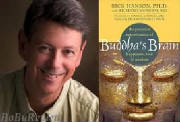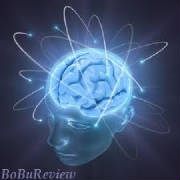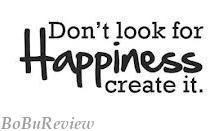|
The Practical Neuroscience of Happiness, Love & Wisdom
 I suppose I was hoping for a sort of virtual forensic dissection
of the actual brain of the Buddha, even though I knew this would be physically impossible. Rick Hanson's title is what grabbed
me first, but then even the description of the book was intriguing, something on the order of a neuro-meditative combination,
which is a bit geeky but overall quite helpful. From
the Foreword, Hanson tells us that we "can use the mind to change the brain." Meaning that, essentially, our thoughts
create our reality. Back to the future on that one, I thought, but in Hanson's extremely well-documented research on neural
pathways and neuroplasticity, we find out that this ancient truism is in actuality true. It's just still extremely
hard for most of us to accept in its simplicity -- and enormity. As well as take in the personal and social responsibility
it connotes.  "Our social connections with one another shape our neural
connections that form the structure of the brain. This means that the way we communicate alters the very circuitry of the
brain . . . " This too, is overwhelming in its ramifications. You mean the way I talk -- as well as the people I talk
to -- actually creates different pathways in the brain that then in turn create different neuro transmitters so that
I am a walking, talking feedback loop? All I can say to that is YIKES. I did quite a bit of research into brain
wave patterns when I was writing a story about Maxwell Cade, an English scientist in London in the 1970's who was the pioneer
of neurofeedback. His breakthrough findings were that people could be shown their own brain wave patterns, have their
personal peak moments pointed out, and then trained to replicate them. Cade based his work on research with yogis and meditators,
who are now well-known to be able to access more of their happy brain bits than the rest of us. (Please forgive the technical
jargon here.)  Here's a quote from Wikipedia: "Experiments
on Tibetan Buddhist monks have shown a correlation between transcendental mental states and gamma waves." Particularly,
it seems, when the monks were given instructions to dwell on compassion, which should show us where our happiness really lies. After I finished working on my story, predictably
called "Brain Wave" (and hence copyrighted thereunder), the existence of brain waves called gamma waves was confirmed
due to the increased sensitivity of measuring devices. Gamma waves apparently are the highest of the high and the best of
the best and can lead to rapture, joy, and single mindedness. Meditation (not right away, of course, but eventually) can lead
to increased gamma waves, assuming one has a properly functioning brain. This last item, however, is not to be taken
for granted. Our brains, it turns out, can be pretty fussy eaters. Hanson's Introduction says that his book is about "how
to reach inside your own brain to create more happiness, love and wisdom." Is he talking about material happiness or
romantic fulfillment?  No. He's talking about using your mind to stimulate and strengthen
one's positive brain states. This is the real meaning of his title, and his website www.wisebrain.org, should also help us understand ourselves and our brain's inner workings. I would highly recommend Hanson's book for its
insights into how the neural workings of our brain can actually help create and support joyful, caring, and deeply insightful
states of mind. I need to read it again
and see if I can remember the differences between serotonin and dopamine and how to amp one up and damp down the other. To this end, Buddha's Brain has a handy
appendix of Nutritional Neurochemistry written by one Jan Hanson, L.Ac., so see you at Ye Olde Naturale Pharmacologie Shoppe. Paki S. Wright, February 2013
|

